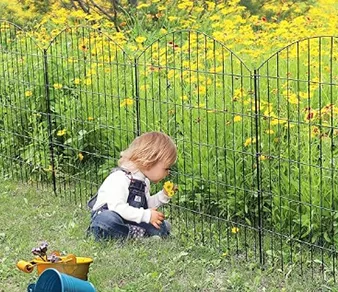The Importance of Rabbit Fence Installation
In the world of gardening and small-scale farming, having a stable and secure environment for plants and crops is paramount. One of the critical challenges faced by garden enthusiasts and farmers alike is the threat posed by rabbits. These adorable creatures, while charming in appearance, can wreak havoc on your garden by munching away at tender vegetables, flowers, and other flora. Thus, installing a rabbit fence is a vital step in safeguarding your garden.
Why Rabbit Fences Are Necessary
Rabbits are known for their remarkable ability to reproduce rapidly, and their appetite for fresh vegetation means they can quickly become a nuisance in gardens. A rabbit can consume an array of plants, including leafy greens, seedlings, and tender herbs, which can result in significant damage to crops. Furthermore, with gardens being increasingly smaller in suburban areas, the risk of rabbit infestation has never been higher. Therefore, a well-constructed rabbit fence can provide an essential barrier, protecting your hard work from these persistent pests.
Choosing the Right Type of Rabbit Fence
When it comes to selecting the type of fence to install, there are several options to consider. The most common type is a wire fence, often made from galvanized steel. This material is known for its durability and resistance to rust, making it an excellent choice for outdoor use. The design of the fence is equally important; it should be at least 2-3 feet tall and buried about 6-12 inches into the ground. This underground section helps prevent rabbits from digging underneath the fence, which is a common tactic they use to breach defenses.
Additionally, a fence with a mesh size of no more than 1 inch will help keep juvenile rabbits out, as they can squeeze through larger openings. Some gardeners opt for electric fences, which provide an additional layer of protection. However, these may require more maintenance and a power source, so it's essential to weigh the pros and cons before committing to this option.
rabbit fence installation

Proper Installation Techniques
Once you have chosen your fence material, the installation process is crucial for ensuring its effectiveness. Begin by mapping out the perimeter of your garden, using stakes to mark where the fence will be placed. Make sure the dimensions are accurate, as a poorly installed fence may leave gaps for rabbits to exploit.
When digging the trench for the fence, aim for a depth of about 6-12 inches. This will discourage rabbits from digging under the fence. After the trench is prepared, install the fence panels, ensuring they are secured firmly to the ground and each other. If using wire fencing, use staples or a fencer’s tie to attach it securely to wooden posts or metal stakes at regular intervals. To finish, ensure that the top of the fence is slightly curved outward at the top to further deter rabbits from trying to jump over.
Maintenance and Monitoring
After your rabbit fence is installed, it's essential to monitor its condition periodically. Check for any signs of wear, bent panels, or areas where rabbits might be trying to dig. Maintenance should also include periodic trimming of plants and weeds around the fence, as these could provide cover for rabbits trying to bypass your defenses.
Conclusion
Installing a rabbit fence is not merely an aesthetic addition to your garden; it is a crucial defense mechanism that protects your plants and crops from the onslaught of these cunning critters. By choosing the right materials, preparing properly, and maintaining your fence, you can create a secure environment that allows your garden to flourish. Ultimately, with a little time and effort dedicated to the installation of a rabbit fence, you can enjoy the fruits of your labor without the worry of unwelcome guests.
















